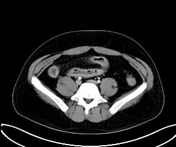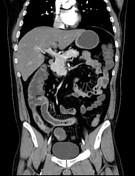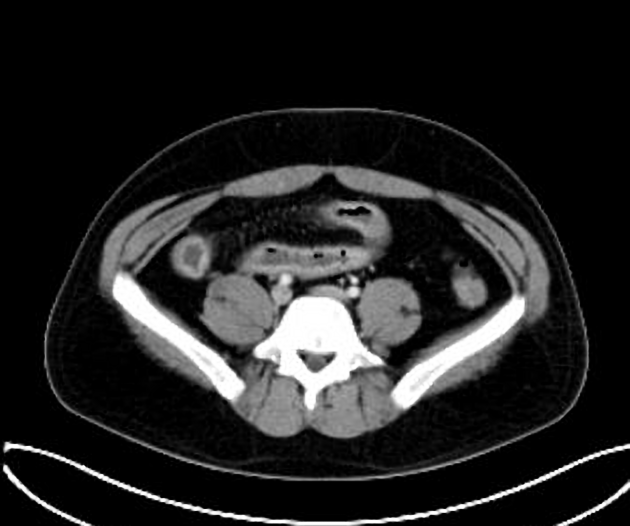Presentation
Abdominal pain.
Patient Data
Age: 30 years
Gender: Female
From the case:
Crohn disease






Download
Info

The terminal ileal loops show mural thickening and contrast enhancement of the mucosa.
Prominent perienteric and pericolic vasculature highlighted by fibrofatty proliferation of the mesentery.
Vascular dilatation and tortuosity of the vasa recta giving the (comb sign).
Few enlarged mesenteric lymph nodes.




 Unable to process the form. Check for errors and try again.
Unable to process the form. Check for errors and try again.